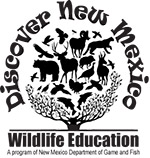Taking Students Outside

Teacher Guidelines for Making the Most of a Field Investigation
- Before you engage students in an outdoor field investigation make sure you visit the area or find out what to expect when you arrive. This can include not only the infrastructure like bathrooms, shade, water availability, shade but also what the habitat and terrain are like.
- Think about where students will actually be during different parts of the investigation. Are there areas students should avoid (stinging insects?) or not miss (birds nest or pond)?
- What other parents, volunteers or staff can help guide the investigation and lend expertise?
- Don’t be afraid to ask and ask again.
- Set up rules, guidelines, and expectations with students before you head outside.
- Engage students in the discussion of what these expectations or rules should be.
- Create a list of specific, positive behaviors that would indicate a successful outdoor learning experience; e.g. We keep our eyes and ears open to what is around us.
- A lot of a successful field investigation has to do with the front end- the basic logistics of who, what, where and how.
- Have a clear plan of action that is open to change! Students should understand what they need to do as part of the investigation.
- What equipment, gear or tools do students need to understand and be able to use? Use journals, clipboards, data sheets to lend structure and support to what you have been in the classroom. Utilize appropriate cameras, recorders, and collection equipment.
- See Appendix: Suggested Field Investigation Equipment.
- Discuss safety and potential hazards. Be aware of sun exposure, bugs, dehydration, weather etc. What do students do if they get lost or separated?
- Be ready for the weather and develop a check-list for what students will need to bring in their backpack.
- Make sure that everyone knows the schedule and plan for the investigation/field study.
- Often it is helpful to spend time in pairs, small groups and individually. Make sure that you set these groupings up before you get outside.
- If it is appropriate for the site, build in time for students to have unstructured, free play in the area you are investigating. There is great research supporting the value of creative free play in developing students’ connection with the outdoors and wildlife.
- Practice and model the field investigation or monitoring techniques before you go outside.
- Review the procedures or what is expected in the field. The clearer it is to your students the more they can focus and enjoy what they are doing instead of worrying about if they are conducting the investigation correctly or not.
- As much as it is appropriate, take part in what the students are doing. Making your own observations in a journal demonstrates that you care, this activity has value and that you are interested in the investigation. Taking the time to cut up an insect gall or help look for isopods under leaf litter is very helpful and fun!
- Be flexible and keep the larger goal of the field investigation and school in mind. The task at hand can easily be interrupted by a spontaneous discovery or appearance of wildlife. If a red-tail hawk or snake appears then be flexible and take advantage of the opportunity to engage the students. Most of the time, any ‘disruption’ is a great chance to show how everything is connected to everything else in the outdoors.
- Think about how to effectively communicate in the outdoors.
- If sun is an issue try to have your students looking away from the sun i.e. put the sun in your eyes if you are presenting
- Gather students closely together to be able to talk quietly and have everyone hear.
- If you are on a narrow trail and not everyone can see or hear then stop the group, step off the trail and walk back towards the middle of the group so everyone can hear what you have to say.
- If you are at an area you use often, find spots where everyone can safely and with minimum impact all gather together to discuss, sit, etc.
Set clear expectations, plan ahead of time, and request support from other groups, agencies and parents. Enjoy the time outdoors with your students. Many facts will be forgotten but the love, enthusiasm and curiosity you have for wildlife, science, exploring the outdoors, etc. will stick with them for a life time.
